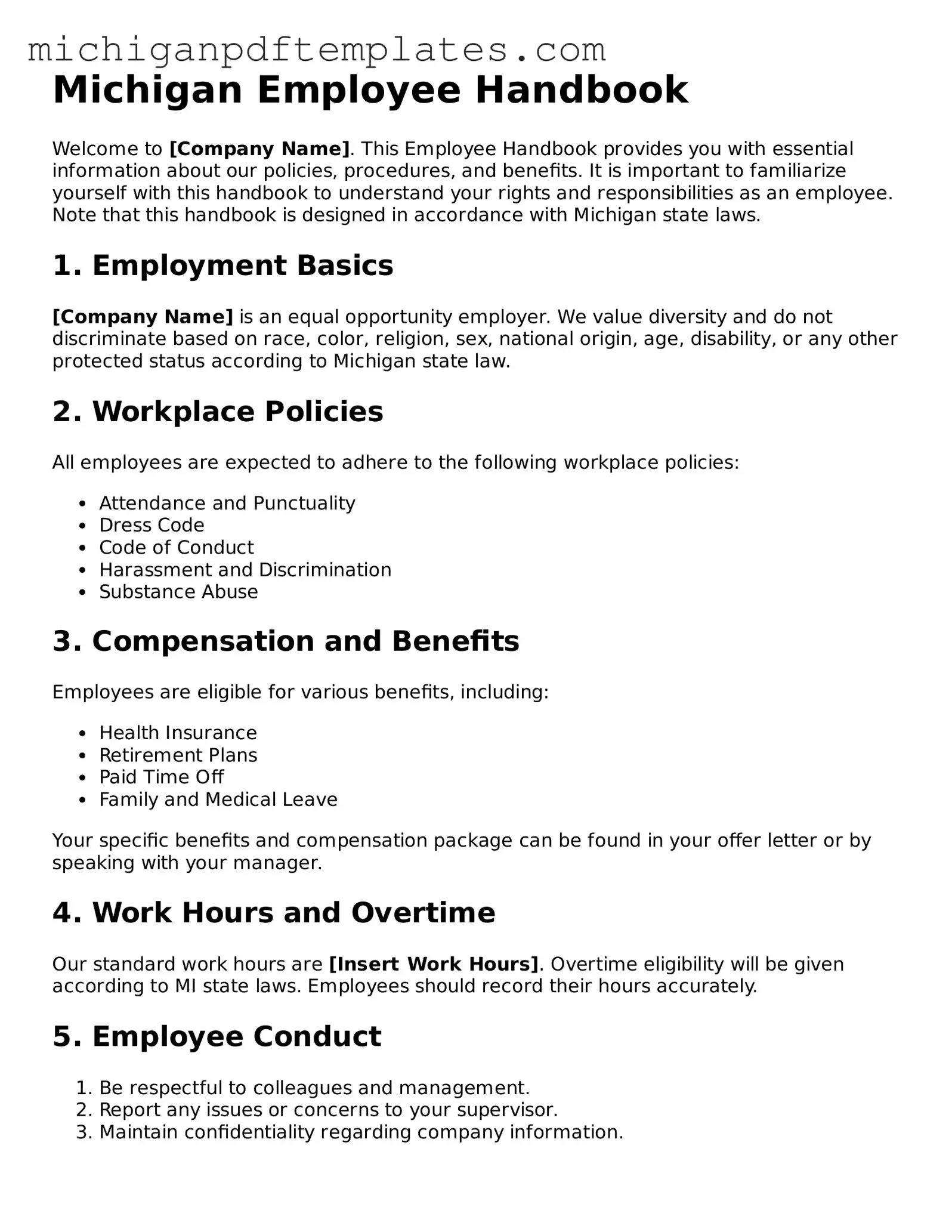Legal Michigan Employee Handbook Template
The Michigan Employee Handbook form is a crucial document that outlines workplace policies, procedures, and employee rights within a Michigan-based organization. This handbook serves as a guide for employees, helping them understand their roles and responsibilities while fostering a positive work environment. Ready to create your own employee handbook? Click the button below to get started!
Get Your Form Now
